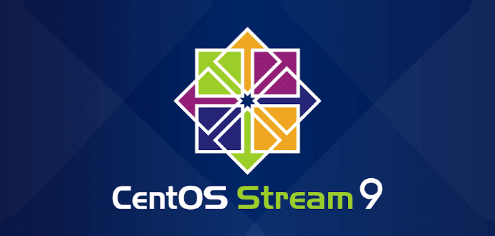
Initial Settings
If you did not configure networking during the CentOS Stream installation, Configure it like follows.
Step [1] To set static IP address to the server, Modify settings like follows. (Replace the interface name [enp1s0] to your own one because it's not the same on any System)
# if you did not set HostName, set it like follows
[root@bizantum ~]# hostnamectl set-hostname dlp.srv.world
# display devices
[root@bizantum ~]# nmcli device
DEVICE TYPE STATE CONNECTION
enp1s0 ethernet connected enp1s0
lo loopback unmanaged --
# set IPv4 address
[root@bizantum ~]# nmcli connection modify enp1s0 ipv4.addresses 10.0.0.30/24
# set gateway
[root@bizantum ~]# nmcli connection modify enp1s0 ipv4.gateway 10.0.0.1
# set DNS
# for multiple DNS, specify with space separated ⇒ ipv4.dns "10.0.0.10 10.0.0.11 10.0.0.12"
[root@bizantum ~]# nmcli connection modify enp1s0 ipv4.dns 10.0.0.10
# set DNS search base (your domain name -for multiple one, specify with space separated)
[root@bizantum ~]# nmcli connection modify enp1s0 ipv4.dns-search srv.world
# set [manual] for static setting (it's [auto] for DHCP)
[root@bizantum ~]# nmcli connection modify enp1s0 ipv4.method manual
# restart the interface to reload settings
[root@bizantum ~]# nmcli connection down enp1s0; nmcli connection up enp1s0
Connection 'enp1s0' successfully deactivated (D-Bus active path: /org/freedesktop/NetworkManager/ActiveConnection/1)
Connection successfully activated (D-Bus active path: /org/freedesktop/NetworkManager/ActiveConnection/2)
# confirm settings
[root@bizantum ~]# nmcli device show enp1s0
GENERAL.DEVICE: enp1s0
GENERAL.TYPE: ethernet
GENERAL.HWADDR: 52:54:00:DF:87:AD
GENERAL.MTU: 1500
GENERAL.STATE: 100 (connected)
GENERAL.CONNECTION: enp1s0
GENERAL.CON-PATH: /org/freedesktop/NetworkManager/ActiveC>
WIRED-PROPERTIES.CARRIER: on
IP4.ADDRESS[1]: 10.0.0.30/24
IP4.GATEWAY: 10.0.0.1
IP4.ROUTE[1]: dst = 10.0.0.0/24, nh = 0.0.0.0, mt = 1>
IP4.ROUTE[2]: dst = 0.0.0.0/0, nh = 10.0.0.1, mt = 100
IP4.DNS[1]: 10.0.0.10
IP4.SEARCHES[1]: srv.world
IP6.ADDRESS[1]: fe80::5054:ff:fedf:87ad/64
IP6.GATEWAY: --
IP6.ROUTE[1]: dst = fe80::/64, nh = ::, mt = 100
# confirm state
[root@bizantum ~]# ip address show
1: lo: <LOOPBACK,UP,LOWER_UP> mtu 65536 qdisc noqueue state UNKNOWN group default qlen 1000
link/loopback 00:00:00:00:00:00 brd 00:00:00:00:00:00
inet 127.0.0.1/8 scope host lo
valid_lft forever preferred_lft forever
inet6 ::1/128 scope host
valid_lft forever preferred_lft forever
2: enp1s0: <BROADCAST,MULTICAST,UP,LOWER_UP> mtu 1500 qdisc fq_codel state UP group default qlen 1000
link/ether 52:54:00:df:87:ad brd ff:ff:ff:ff:ff:ff
inet 10.0.0.30/24 brd 10.0.0.255 scope global noprefixroute enp1s0
valid_lft forever preferred_lft forever
inet6 fe80::5054:ff:fedf:87ad/64 scope link noprefixroute
valid_lft forever preferred_lft forever
Step [2] If you don't need IPv6, it's possible to disable it like follows.
# disable IPv6
[root@bizantum ~]# grubby --update-kernel ALL --args ipv6.disable=1
# verify kernel parameters
[root@bizantum ~]# grubby --info DEFAULT
index=0 kernel="/boot/vmlinuz-5.14.0-17.el9.x86_64" args="ro crashkernel=1G-4G:192M,4G-64G:256M,64G-:512M resume=/dev/mapper/cs-swap rd.lvm.lv=cs/root rd.lvm.lv=cs/swap console=ttyS0,115200n8 selinux=0 ipv6.disable=1" root="/dev/mapper/cs-root" initrd="/boot/initramfs-5.14.0-17.el9.x86_64.img" title="CentOS Stream (5.14.0-17.el9.x86_64) 9" id="ab414d4792d04b9dbc1e2361f936e849-5.14.0-17.el9.x86_64"
[root@bizantum ~]# reboot
[root@bizantum ~]# ip address show
1: lo: <LOOPBACK,UP,LOWER_UP> mtu 65536 qdisc noqueue state UNKNOWN group default qlen 1000
link/loopback 00:00:00:00:00:00 brd 00:00:00:00:00:00
inet 127.0.0.1/8 scope host lo
valid_lft forever preferred_lft forever
2: enp1s0: <BROADCAST,MULTICAST,UP,LOWER_UP> mtu 1500 qdisc fq_codel state UP group default qlen 1000
link/ether 52:54:00:df:87:ad brd ff:ff:ff:ff:ff:ff
inet 10.0.0.30/24 brd 10.0.0.255 scope global noprefixroute enp1s0
valid_lft forever preferred_lft forever
# if falling back to enable, run like follows
[root@bizantum ~]# grubby --update-kernel ALL --remove-args ipv6.disable









Comments
Post a Comment
Thank you for your comment! We appreciate your feedback, feel free to check out more of our articles.
Best regards, Bizantum Blog Team.